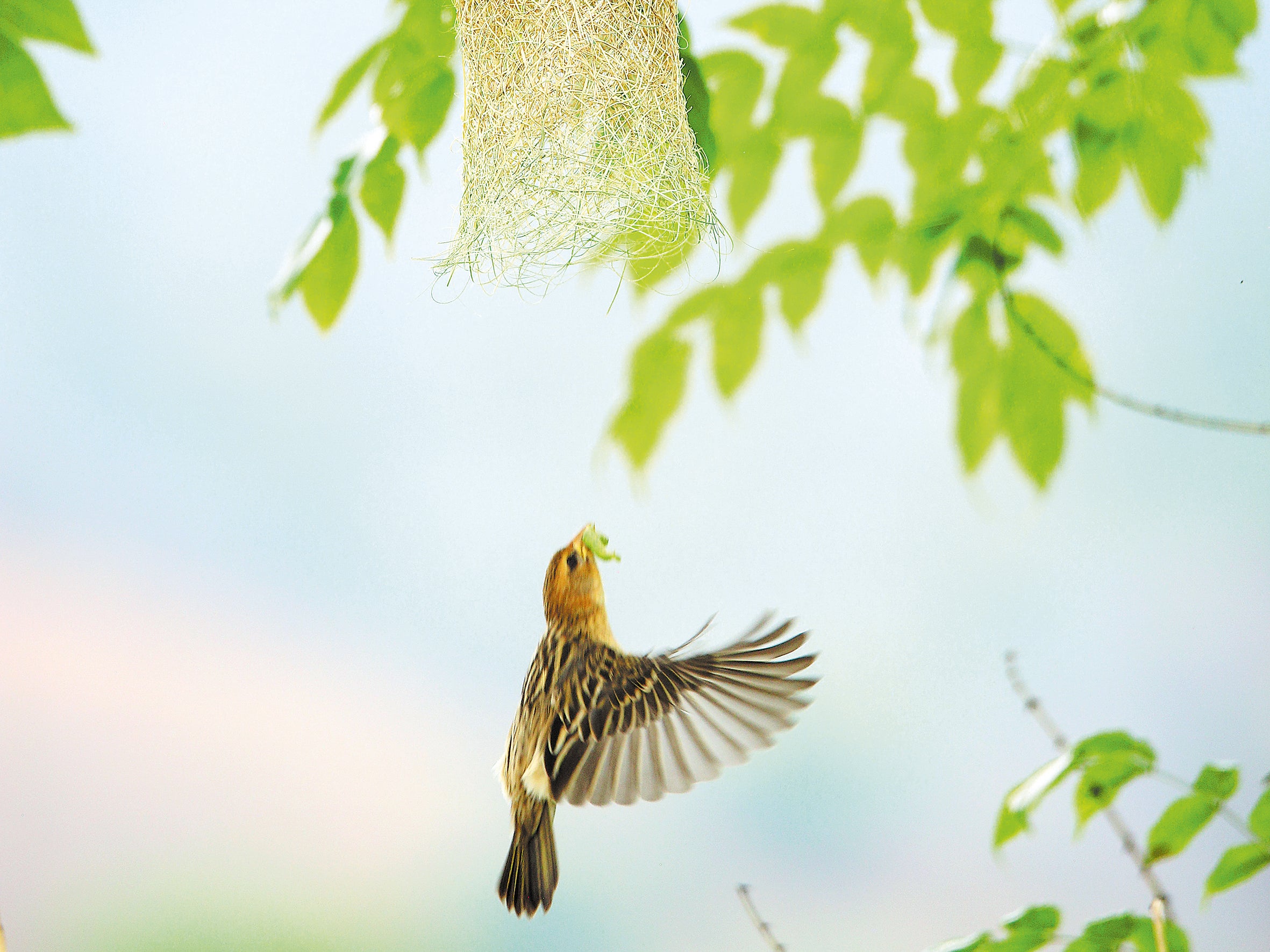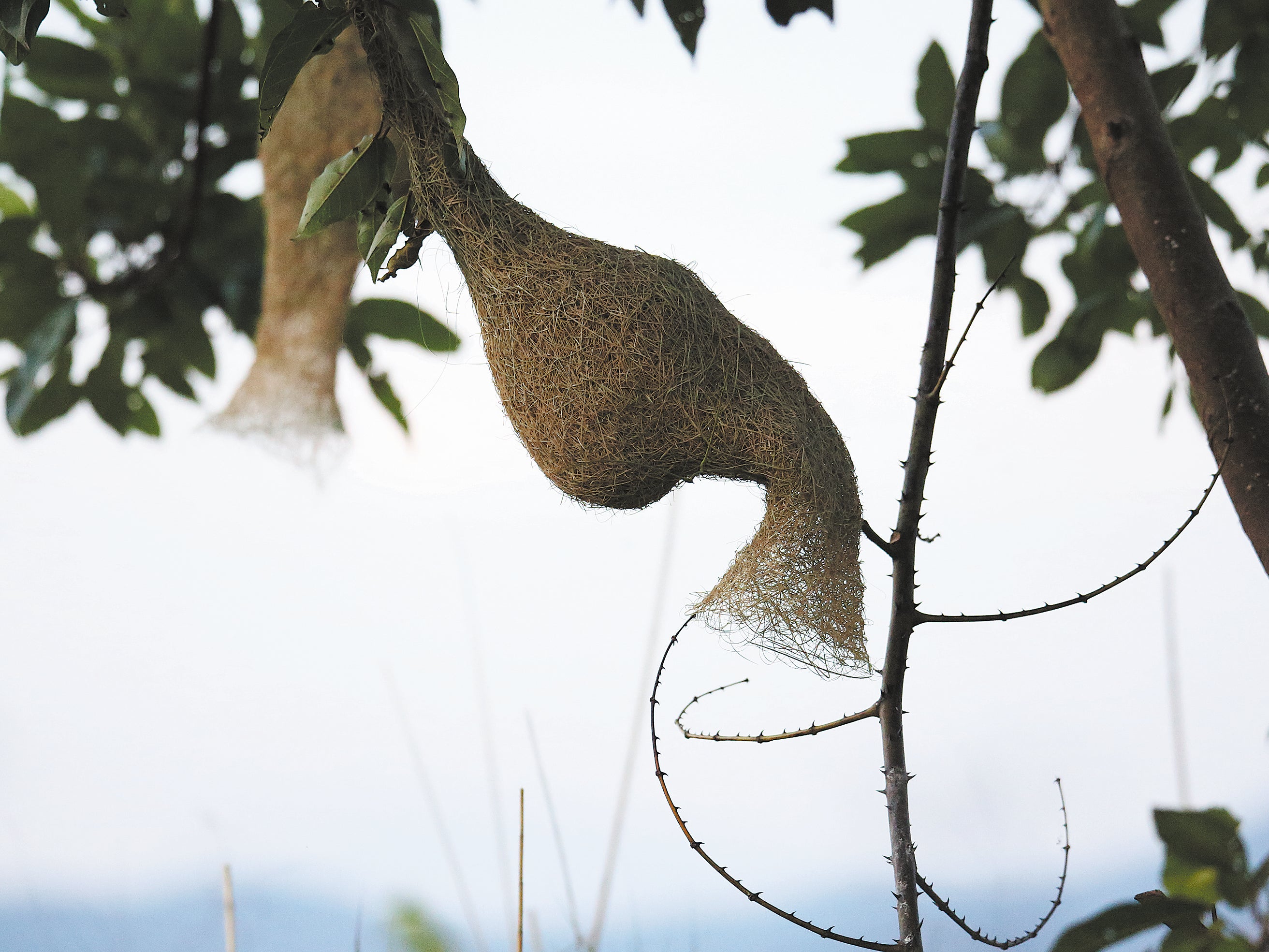Breeding ground attracts birds, tourists
THE ARTICLES ON THESE PAGES ARE PRODUCED BY CHINA DAILY, WHICH TAKES SOLE RESPONSIBILITY FOR THE CONTENTS

Each spring, the banks of the Mengboluo River in Yunnan province become a busy habitat for the industrious baya weaver. This agile creature, famous for its intricately woven bag nests, flock here in search of suitable branches on mango trees, flame trees and bamboo clumps.
Along a roughly 15-mile stretch of the river winding through Wandian Dai township in Baoshan city, nearly 2,000 birds arrive each breeding season, drawn by the warm, humid climate and plentiful trees that make this reach an ideal breeding ground, according to the local environmental protection bureau.
“Every early April, they return from their wintering grounds — possibly in neighbouring Southeast Asian countries and other parts of Yunnan — to Wandian,” said Zhao Yantong, deputy director of the environmental protection bureau of Baoshan. “Nest-building peaks in May and June, and by early September they begin to depart.”

Building a single nest is no small undertaking. Within 20 to 25 days, a male bird weaves thousands of grass stems into a sturdy pouch, hanging it from a branch. This structure is both his workshop and his showcase — a flawless nest increases the chances of attracting a mate.
Courtship hinges on craftsmanship. A visiting female bird inspects the nearly completed nest and either approves or rejects it. Only after a female’s nod does the male finish his nest.
“If she rejects the nest, she flies off to another suitor,” Zhao said. In that case, the male will dismantle or abandon his work and start from scratch, repeating the process until he wins her approval.
Local conservation efforts have been critical to the birds’ decadelong flourishing in the area. The Mengboluo River, part of the Nujiang River watershed, flows through a protected corridor where evergreen trees, flame trees, mango groves and bamboo thickets remain untouched. In recent years, authorities have banned mining and deforestation along the riverbanks, and tightened regulations on construction and waste disposal.
“Last year, all of our water quality monitoring stations reported good results, and daily air quality was classified as either excellent or good,” Zhao added, underscoring the healthy environment that supports diverse wildlife.
Local outreach has bolstered protection efforts through leaflets, door-to-door visits and community workshops, which help villagers learn to cherish and safeguard the weavers’ habitat.
As the bird population grows, so does ecotourism.
Their unique nesting habits attract many tourists. One photographer from Zhejiang province travelled more than 1,800 miles to capture the birds. “Seeing these weavers and their nests up close is like witnessing a master craftsman’s work,” he told local media.
The birds’ seasonal breeding also brings economic benefits.
“Every breeding season, bird-watchers from across the country arrive, generating income for locals with transportation, dining and lodging,” said Yu Fei, an official of the Wandian Dai township. “Next, we plan to further develop our bird-watching economy and designate specific viewing zones, so tourists can enjoy the spectacle without disturbing the weavers.”

Bookmark popover
Removed from bookmarks